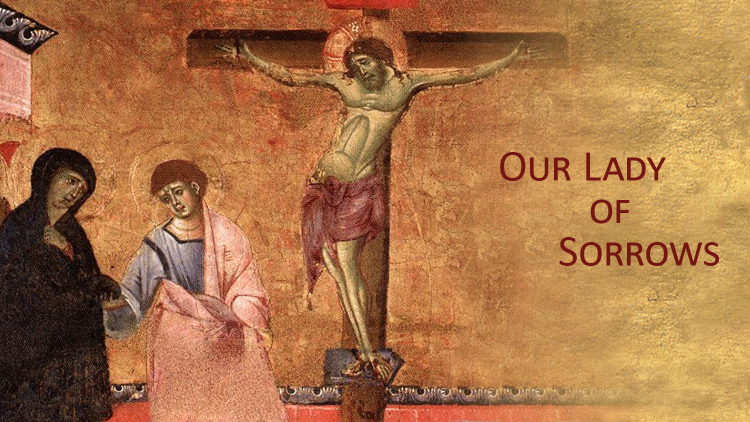
Memorial of Our Lady of Sorrows
Standing by the cross of Jesus were his mother and his mother’s sister, Mary the wife of Clopas, and Mary Magdalene. When Jesus saw his mother and the disciple there whom he loved he said to his mother, “Woman, behold, your son.” Then he said to the disciple, “Behold, your mother.” And from that hour the disciple took her into his home (Jn 19:25-27).
Affidamento
Seeing His Mother, Jesus entrusts her to the beloved disciple. This almost represents His last will and testament. It makes Mary the Mother of the disciple, and makes the disciple the Mother’s son. “He took her into his home”, that is, into his most intimate place, into everything he holds most dear. Jesus did not leave His Mother alone. He entrusted her to the care of his beloved disciple, to the one who followed him to the last.
Woman
The same word is used as at Cana, almost as if there is a connection between the two passages. At Cana, Jesus’s hour had not yet come, whereas on the Cross, it had. The Cross becomes the event that Cana prophesied. By using the term, “woman”, Jesus refers to Eve: “This one shall be called ‘woman’ ” (Gn 2:23). Mary is the new Eve.
Disciple
Jesus entrusts His Mother to the disciple. This disciple, tradition tells us, represents the entire Church. Mary is entrusted to the Church, and the Church is entrusted to Mary, the Mother of Jesus, the first disciple of her Son.
Mother and disciple
For all of us, Mary is the Mother of her Son, our Lord, Jesus. But she is also a Disciple of the Master, the one who can help us better than anyone else to grow in her Son’s School. More than anyone else, she knew how to remain faithful in this School, to the point that she remained “standing” at the foot of the Cross. This fidelity caused her to suffer an interior martyrdom: “And you yourself a sword will pierce”, Simeon had foretold (Lk 2:35).








